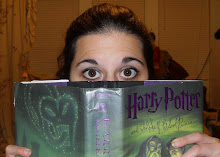The plot of the Divine Comedy lasts three days. It starts on Good Friday in 1300, during which the events of Inferno occur. The narrator is Dante (the character) who is exactly 35 years old, which was considered to be half-way through life. He is lost in a wood and being chased by three creatures: a lion, a leopard, and a she-wolf. He is rescued by Virgil, the famous Latin poet who is symbolic of human reason, who was sent by Beatrice, who is symbolic of pure love.
They then travel through the nine circles of Hell. Here is a web page with a few maps: http://www.waggish.org/2011/dante-old-maps-of-hell/. Each layer of Hell has a different type of punishment, but they are all contrapasso, or fitting in the way of poetic justice. There are some pretty gory details, so I will spare you if you have a weak stomach. But the point is, that everyone in Hell chose their fitting punishment by acting a certain way during life.
I personally enjoyed Dante's Inferno. I thought the punishments were interesting to read, even if they do scare you a bit, if you put stock in them. I also enjoy the numerology and all of the patterns in the series. There are 100 Cantos (like chapters), and each book has 33, plus one introductory. This is the suspected age of Jesus at his death. Also, each verse is written in terza rima, which means they are in the pattern of aba, bcb, cdc, etc... This is also called the golden chain. These connections and the repetitive number three are external ways that this work is related to the Trinity, which gives another layer of depth to the work. I'm just a sucker for "Form Follows Function", as my high school English teachers taught us.
Finally, I get to mark one off the list! 1 down, 99 more to go!

Whoaaa great idea for a blog :D Did you ever read The Decameron as well by any chance? I remember reading them in the same bundle for a class.
ReplyDeleteThanks! I haven't read The Decameron. But after looking it up, I want to! It'll get added to the list of classics to read after I finish this project.
ReplyDelete